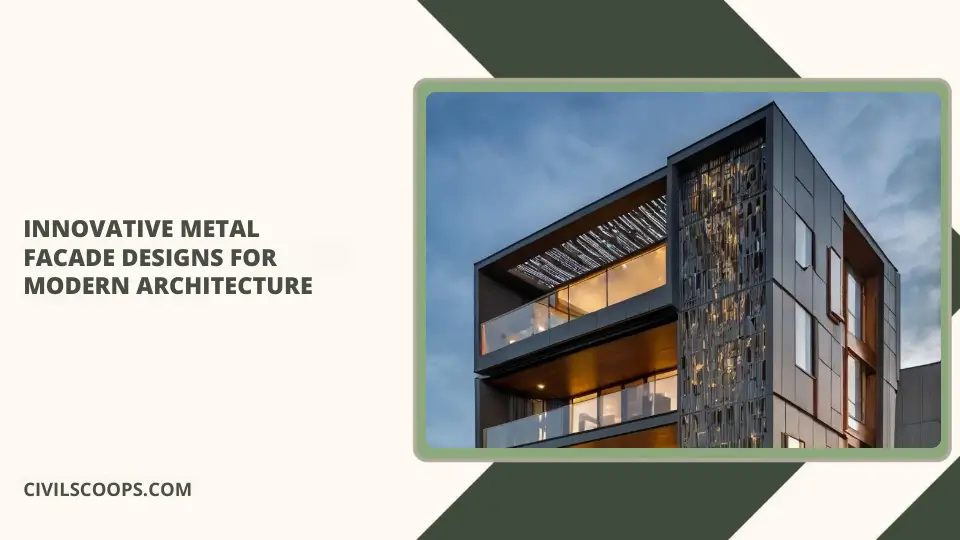Innovative Metal Facade Designs for Modern Architecture
In the world of contemporary architecture, the facade of a building plays a pivotal role in shaping its identity. A well-designed facade not only enhances the aesthetic appeal of a structure but also contributes to its functionality, energy efficiency, and sustainability.
Among the various materials used for facades, metal has emerged as a standout choice for modern architecture. The versatility, durability, and sleek appearance of metal facades make them an ideal option for both commercial and residential buildings.
In this article, we will explore some of the most innovative metal facade designs that are transforming modern architecture.
Table of Contents
1. The Beauty of Minimalism: Flat Metal Panels
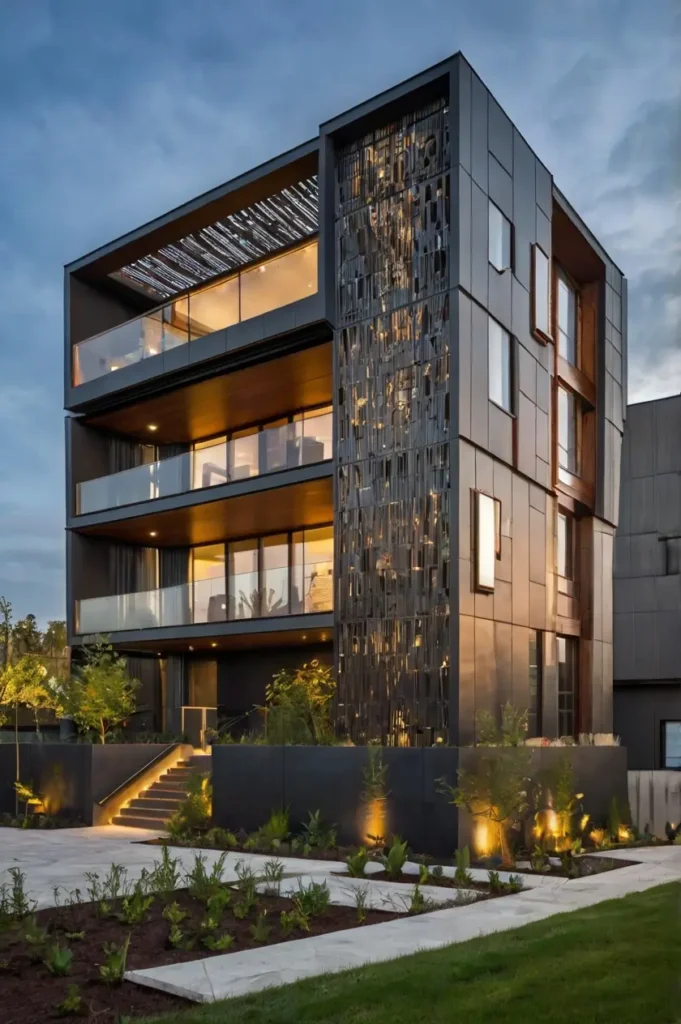
One of the simplest yet most striking approaches to metal facades is the use of flat metal panels. These panels are often made from materials like aluminum or steel and can be customized with different finishes, such as matte, glossy, or brushed textures.
The clean lines and smooth surfaces of flat metal panels create a sleek, modern aesthetic, making them perfect for minimalist designs.
Advantages:
- Sophisticated Aesthetic: The smooth, uninterrupted surface of flat panels creates a refined and elegant look.
- Customization: These panels can be anodized or powder-coated to match any color or finish, making them highly customizable.
- Durability: Metal panels are resistant to harsh weather conditions, including UV rays, rain, and snow, making them long-lasting.
2. Dynamic and Textured: Perforated Metal Facades
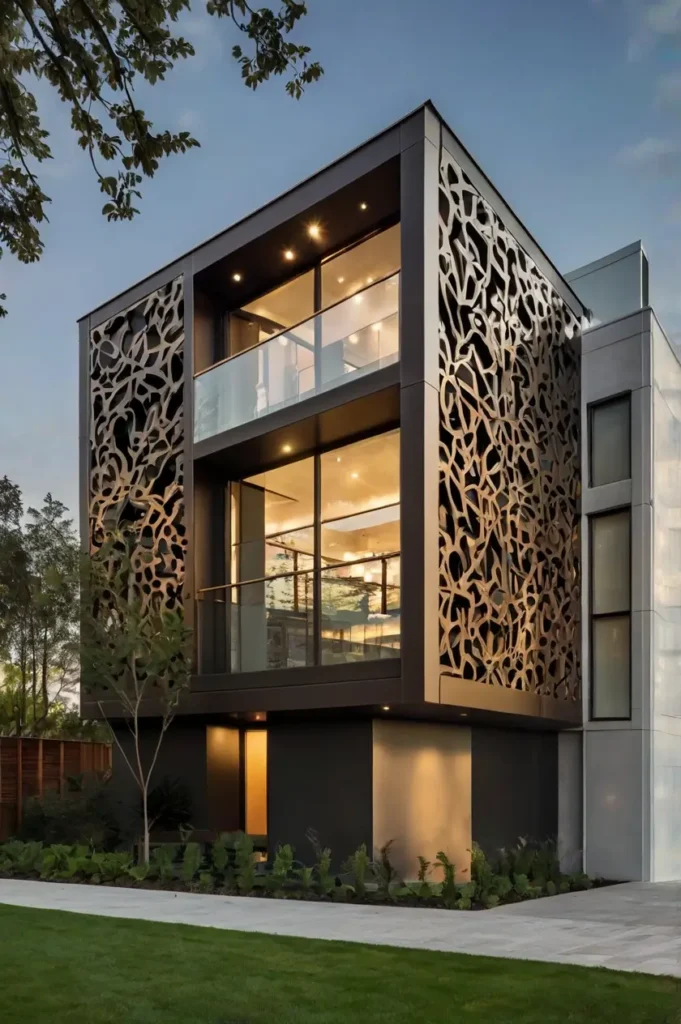
Perforated metal facades are an excellent way to add texture and depth to a building’s exterior. These facades are made by punching holes or patterns into the metal, creating intricate designs that can also allow for ventilation and light filtration.
Perforated metal facades are commonly used in commercial buildings, cultural institutions, and even residential homes looking for a unique and eye-catching exterior.
Advantages:
- Enhanced Aesthetic: Perforated designs can range from simple patterns to complex geometries, allowing for endless creative possibilities.
- Functionality: Perforated panels can provide natural ventilation, reducing the need for mechanical cooling systems in some cases.
- Light and Shadow Play: The perforations create stunning light and shadow effects, which change throughout the day, giving the building a dynamic and ever-changing appearance.
3. Sustainability Focus: Green Metal Facades
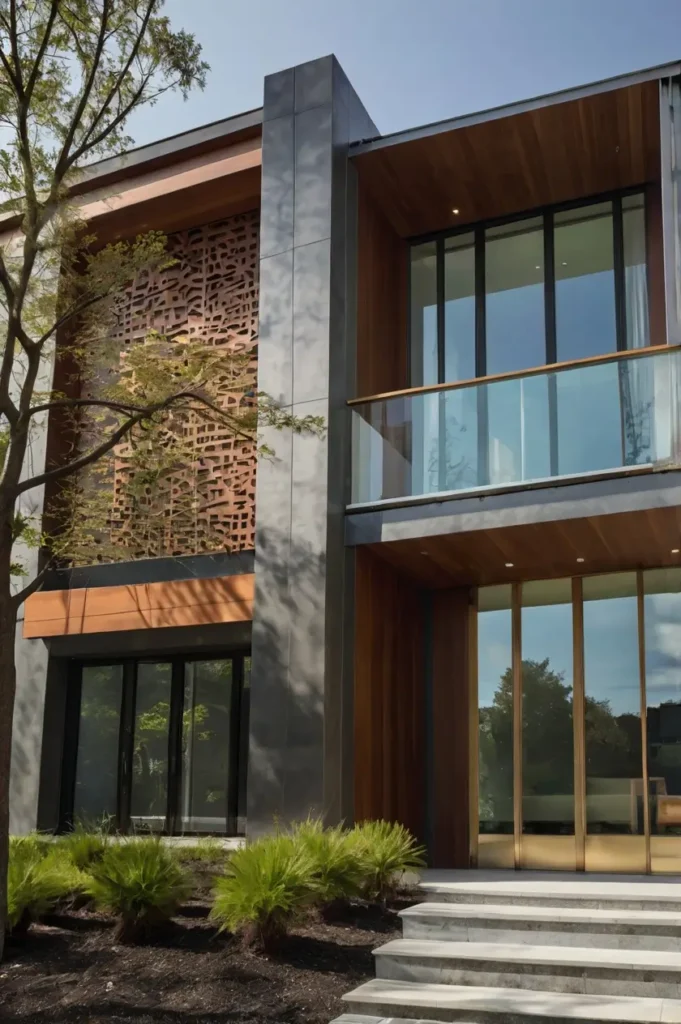
Sustainability is a driving force in modern architecture, and metal facades are increasingly being used as part of eco-friendly building designs.
Green metal facades are typically paired with energy-efficient features, such as solar panels, green walls, or rainwater harvesting systems, to enhance the building’s environmental performance. Metal is an ideal material for sustainable facades because it is highly recyclable and energy-efficient.
Advantages:
- Eco-Friendly: Metals like aluminum and steel are 100% recyclable, contributing to the reduction of building waste.
- Energy Efficiency: Metal facades can be paired with thermal insulation or reflective coatings to improve energy efficiency and reduce heating and cooling costs.
- Integration with Green Technologies: Solar panels, vertical gardens, or rainwater collection systems can be seamlessly integrated into metal facades, further reducing the environmental impact of the building.
4. Fluidity in Design: Curved Metal Facades
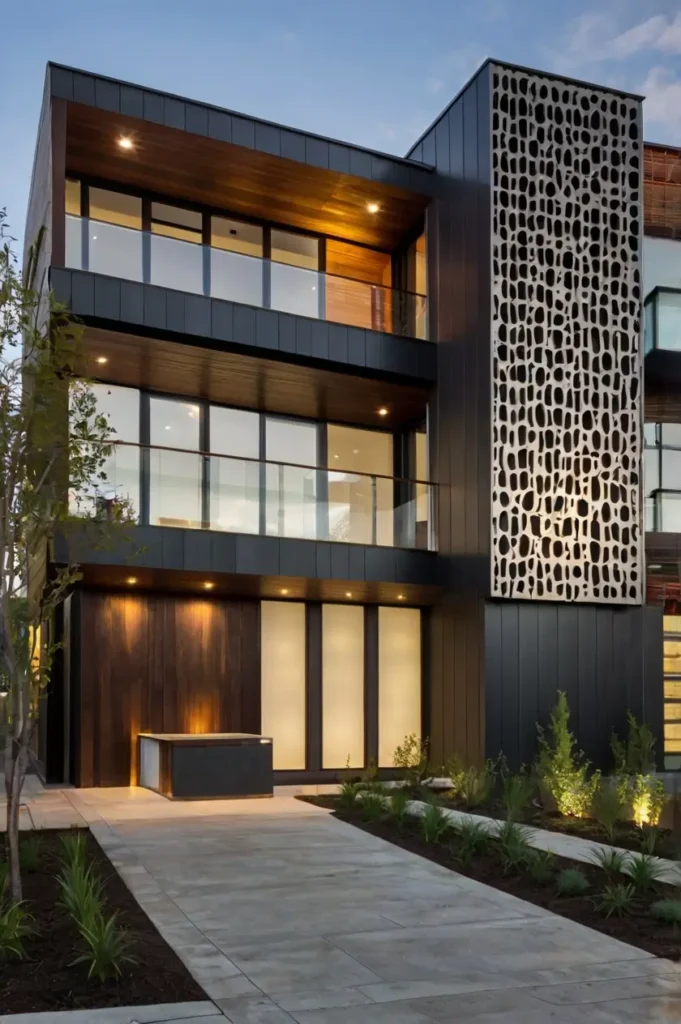
While straight lines dominate many modern metal facades, curved metal facades are gaining popularity for their ability to create a sense of fluidity and movement.
These facades are formed by bending metal sheets or panels into graceful curves, allowing architects to break free from the constraints of traditional, angular designs.
Curved facades are especially striking in buildings meant to represent motion or creativity, such as museums, concert halls, and theaters.
Advantages:
- Visual Impact: Curved metal facades create a bold, sculptural appearance that stands out among surrounding buildings.
- Architectural Expression: The curves can be used to express the fluidity of design, perfect for cultural or artistic buildings.
- Structural Integrity: Modern technology allows curved metal facades to be as durable and structurally sound as their flat counterparts, ensuring they stand the test of time.
5. Combining Metal with Other Materials: Mixed-Material Facades
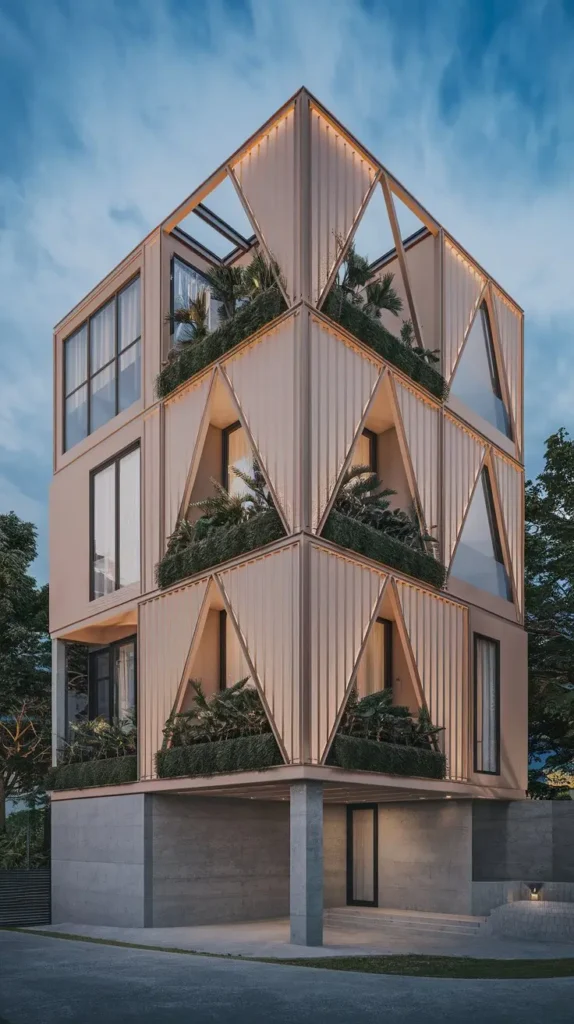
An increasingly popular trend in modern architecture is the combination of metal facades with other materials like glass, wood, or concrete.
This approach adds richness and texture to the building, creating a visually stimulating contrast between the sleekness of metal and the warmth of natural materials.
Mixed-material facades are particularly common in high-end residential and commercial projects where creating a unique, sophisticated aesthetic is paramount.
Advantages:
- Versatility: By combining metal with wood or stone, architects can create facades that balance modernity with natural warmth.
- Visual Contrast: The juxtaposition of metal with materials like glass or wood helps the building stand out and creates a harmonious aesthetic.
- Increased Functionality: Each material serves a distinct purpose—metal for durability and strength, glass for light, and wood or stone for texture—resulting in a highly functional and attractive exterior.
6. Innovative Metal Cladding Systems: Modular and Prefabricated Facades
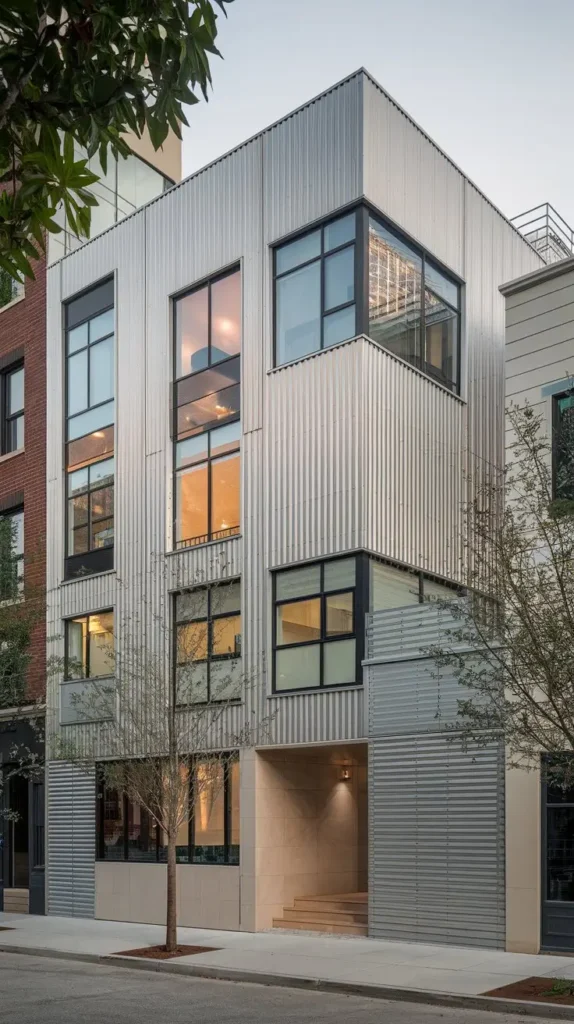
Modular metal cladding systems are revolutionizing the way facades are designed and installed. These systems consist of pre-manufactured panels or modules that can be easily assembled on-site, reducing construction time and cost.
Prefabricated metal facades are gaining popularity because of their precision and efficiency, offering an innovative solution for both large-scale commercial buildings and smaller residential projects.
Advantages:
- Speed of Installation: Prefabricated panels are designed to be easily and quickly installed, reducing labor costs and construction timelines.
- Consistency: Prefabrication ensures that each panel is of uniform quality, resulting in a consistent aesthetic across the entire building.
- Design Flexibility: Modular systems can be customized to fit a wide range of design styles, from industrial to contemporary.
7. Reflective Metal Facades: Mirror Finishes for Contemporary Elegance

Reflective metal facades, often made from stainless steel or mirrored aluminum, are a striking design element in modern architecture.
These facades not only reflect their surroundings, creating a seamless connection between the building and its environment, but they also introduce an element of glamour and sophistication.
Reflective metal facades are often used for luxury buildings, high-end retail spaces, and public art installations.
Advantages:
- Visual Continuity: Reflective facades blend the building with its surroundings, making it appear as if the structure is one with the landscape.
- Sophisticated Appeal: The shiny, mirror-like finish adds a luxurious, contemporary touch to any building.
- Light Reflection: The reflective nature of the material can enhance the surrounding lighting, creating unique visual effects.
Conclusion
Metal facades are an essential part of modern architectural design, offering a blend of aesthetics, functionality, and sustainability. Whether it’s the sleek appearance of flat metal panels, the intricate designs of perforated facades, or the sustainability focus of green metal facades, the possibilities are endless.
As the industry moves toward more innovative, sustainable, and efficient designs, metal facades will undoubtedly remain at the forefront of architectural trends, continuing to shape the future of buildings around the world.

